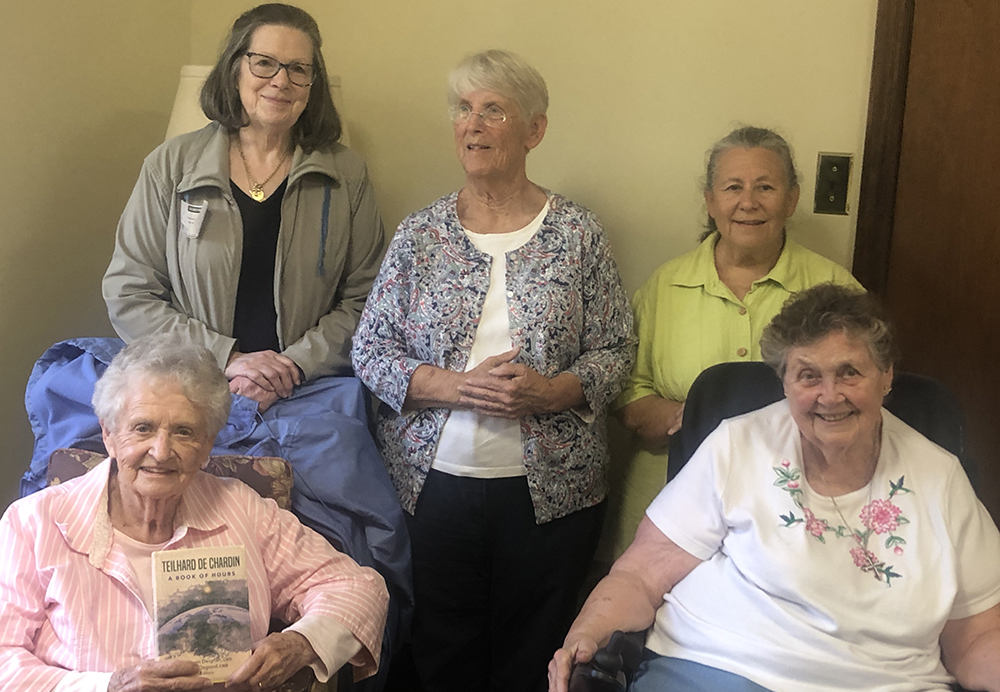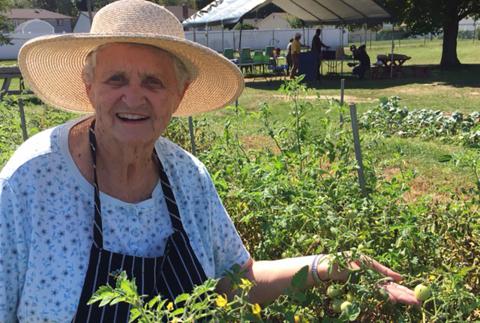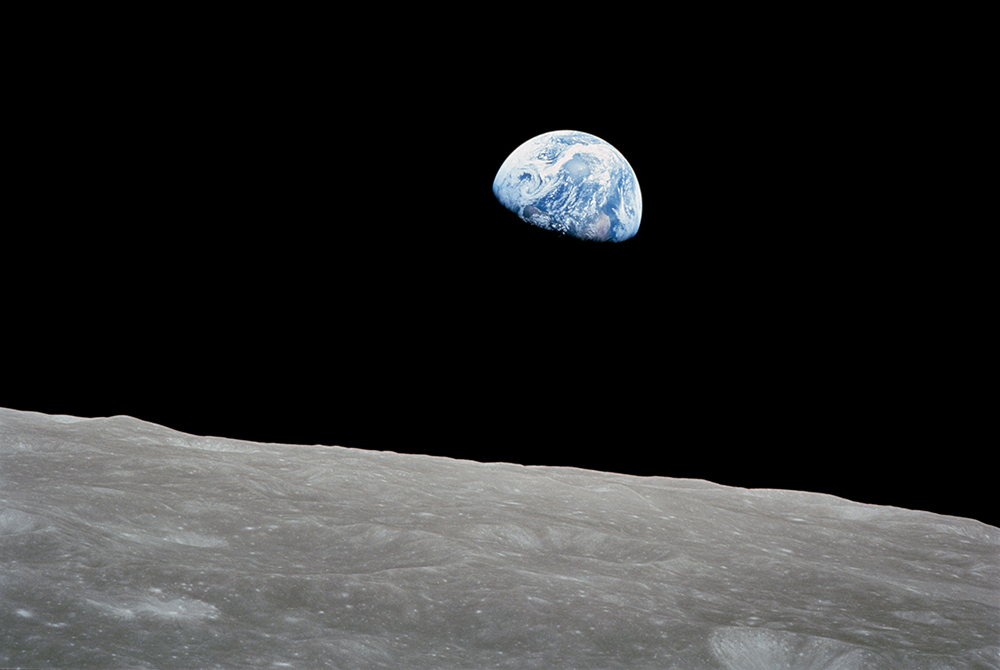
Elderberry and Dominican Sr. Mary Anna Euring said her study of the New Story "opened another and deeper dimension of my prayer as I continue to embrace creation spirituality as my path to, with and in the Divine." (Unsplash/Terry Tan de Hao)
Amid floods and droughts, species extinction and other consequences of the global climate emergency, a worldwide movement believes a new understanding of our origin story can help renew the Earth and the life it sustains.
On Long Island, New York, six women, three of whom are Dominican sisters, are part of that growing network. They call themselves the "Elderberries." One, because they are "elders," and because they are followers of Thomas Berry, the late Passionist priest, cultural historian and self-described "geologian."
Proponents of what is known as the "New Story" say humans distanced themselves from nature and the Earth, exploiting the Earth's resources in pursuit of power and wealth. Humanity's insatiable desire for more overtaxed those resources, resulting in our current environmental crisis. The health of the planet and all species depends on whether humans assume "the great work," defined by Berry in his book of that title as "the transition from a period of human devastation of the Earth to a period when humans would be present to the planet in a mutually beneficial manner."
Most people live out of a cosmology tied to the origin story wherein a transcendent God outside the universe creates the cosmos and all life forms over six days, giving humans dominion over the rest of creation. This narrative is often called the "separation story" because it views humans as disconnected from nature and the Earth.
In the New Story coming to us through science, creation is an evolving process that began some 14 billion years ago and continues until today. The earliest humans emerged roughly 2.6 million years ago, interconnected to all life that came before.
Advertisement
"We are all one, we all come from the Earth and are related to all other life forms," explained Sr. Jeanne Clark, who facilitates the Elderberries' monthly meetings and annual retreat. "The sun and the stars, forests and oceans, plants and animals are our kin, each belonging, each sacred."
"This is the cosmology that brings hope for the future because the old story is now, as Thomas would say, 'pathological,' " Clark added. "If we understand, as Thomas taught, that there's no such thing as the human community, only the life community of which the human is part, we'll begin making decisions differently."
This would involve shifting from an emphasis on individuality and competition to communion and cooperation in our own lives and the institutional realms of politics, law, economics, education and religion, always with the well-being of the entire life community in mind.
Images obtained with the Hubble Space Telescope revealed that the universe developed over billions of years. This discovery called into question the account of God creating the universe in one fell swoop over a period of days.

The "Elderberries" include from left (bottom row): Sr. Jeanne Clark and Sr. Mary Anna Euring, both members of the Sisters of St. Dominic of Amityville, New York. Second row: Jacqueline Jill-Rito, Ann Michelsen and Denise Altobeli. Clark is holding a new meditation book on the teachings of Teilhard de Chardin. (Susan Perretti)
"If we understand, as Thomas [Berry] taught, that there's no such thing as the human community, only the life community of which the human is part, we'll begin making decisions differently."
— Sr. Jeanne Clark
The New Story brings together science and faith, matter and spirit, the secular and the sacred.
Clark, who entered the Dominican order in 1958, has no conflict with those seeming contradictions.
"Dominicans strive for truth, and science has always been a big part of Dominican life," she said. "As a Dominican, I can't believe that God created the universe in days because I know the science. Without the stars and the animals, without the fish, I would not have my body."
Since the early '60s, Clark has been devoted to the teachings of Teilhard de Chardin, the Jesuit priest and scientist. "Teilhard ushered in an understanding of the sacredness of matter and understood that we find God in the world where divinity is close at hand. With this new perception, he was able to say, 'the world is full of God.' "
Elderberry and Dominican Sr. Mary Anna Euring said her study of the New Story "opened another and deeper dimension of my prayer as I continue to embrace creation spirituality as my path to, with and in the Divine."
"My love for the Earth has evolved into the felt realization that I am, in truth, part of the Earth, as I am made of stardust. Thus, the New Story has helped make sense of what I already instinctively believed from deep within — that we are all one."

Sr. Jeanne Clark, a member of the Sisters of St. Dominic of Amityville, New York, is pictured at Homecoming Farm, a community-supported agriculture project on the grounds of the Dominican motherhouse. (Courtesy of Meiling Sandy Ku)
At a meeting at the Sisters of St. Dominic Queen of the Rosary Motherhouse in Amityville, New York, members of the Elderberries recalled sensing first echoes of the New Story as children delighting in nature.
Jacqueline Jill-Rito grew up in an extended Italian family home surrounded by fruit trees and vegetable gardens. Encountering the New Story at her first Elderberries meeting in 2018 brought her childhood experiences into "plausible focus, even after years of questions and contradictions." As a girl, Denise Altobeli would "sit for hours watching the ants." Years later, she would save a crop of dandelions that others in her co-op complex wanted to destroy.
Clark became an anti-war and anti-nuclear activist due to her love for the Earth and "for the children and the young of every species," to whom she dedicated her 2023 book, All the Way In: A Story of Activism, Incarceration and Organic Farming.
Clark believes that children start out attuned to the rhythms of the Earth but often lose this connection under the influence of culture, religion and educational systems still steeped in the old cosmology. This is particularly true in the West, which values consumerism and self-sufficiency. She is distressed at young people's total attachment to screens and phones that rob them of imagination and an interior life. She said ecological learning centers and the Montessori approach of reacquainting students to nature are important steps in reversing that trend.
"According to Thomas, we are living at a crossroads," she said. "One road leads to the technozoic era where we think technology will solve everything. The other leads to the ecozoic where the human and natural world come together in a mutually-enhancing way."

The rising Earth is about five degrees above the lunar horizon in this telephoto view taken from the Apollo 8 spacecraft near 110 degrees east longitude. Astronaut Bill Anders took the photo on the morning of Dec. 24, 1968. The South Pole is in the white area near the left end of the terminator. North and South America are under the clouds. (NASA)
For 27 years, Clark, along with Elizabeth Keihm, has taught children about the Earth at Homecoming Farm, a community-supported agriculture project on the grounds of the Dominican motherhouse. In All the Way In, Clark writes that the program reconnected "adults, teenagers and children to the land, to seeds and soil, worms and bees, butterflies and insects of all kinds and helped them discover together that we are all one sacred community of life."
Clark believes that locally and globally, people versed in the New Story can help turn the tide toward Berry's vision of the ecozoic. Clark and Rito work for peace as members of Pax Christi Long Island. Euring started a "Care of Creation Team" at Queen of the Rosary. Ann Michelsen, one of the early Elderberries, turned nature walks in her seaside neighborhood with her children and grandchildren into a family tradition.
"Wherever you are, you take it there," said Michelsen, who joined the Elderberries with her husband, Tom, in the 1980s. Tom died in 2021, but Ann remains involved.
Michelsen said knowing the New Story "grounds" and makes her "more understanding" of others. Other than that, it is hard to articulate. "It's not something you can distill. It's an experience."
In the 1970s, at any given time, up to 20 men and women started meeting on Long Island to study the work of Berry and other thinkers in the field of cosmological spirituality, like former Dominican priest Matthew Fox and mathematical cosmologist Brian Swimme.
Clark joined in the early '90s and also belongs to online communities like Deeptime Network, which according to its website, is a place where students of the New Story can "connect, learn, share resources and collaborate." Clark views these virtual sites, as well as educational non-profit organizations like the Dominican-associated Genesis Farm in Blairstown, New Jersey, as evidence that more people are beginning to know and live out of the New Story.
"My love for the Earth has evolved into the felt realization that I am, in truth, part of the Earth, as I am made of stardust."
— Dominican Sr. Mary Anna Euring
That's not to say change will happen quickly or that worsening environmental and cultural decline isn't ahead.
"We can't be convinced that everything is going to be okay because cataclysm is coming," Clark said. "But as in the past, what is coming will be part of an evolution that will create something totally new because the universe is always moving toward life, and I have faith in life."
The Elderberries do not purport to have answers to all the world's problems. They say much of what cannot be explained remains a mystery, and perhaps the best we can do is to live well within that uncertainty while maintaining a sense of wonder at the beauty and complexity of the living, breathing body of the Earth.
"Hopefully, if the New Story is embraced and lived, things like war will become extinct," Clark said. "We would not be in competition with one another, [and] land would not be a resource and something to possess. We would embrace differences as something to celebrate. We would look at each other as part of the whole and, like us, as the universe reflecting on itself. We would be one with all of life.
"That is why I say there is no way to peace without the transformation of the human understanding of who we are that comes to us through the story of the universe."







